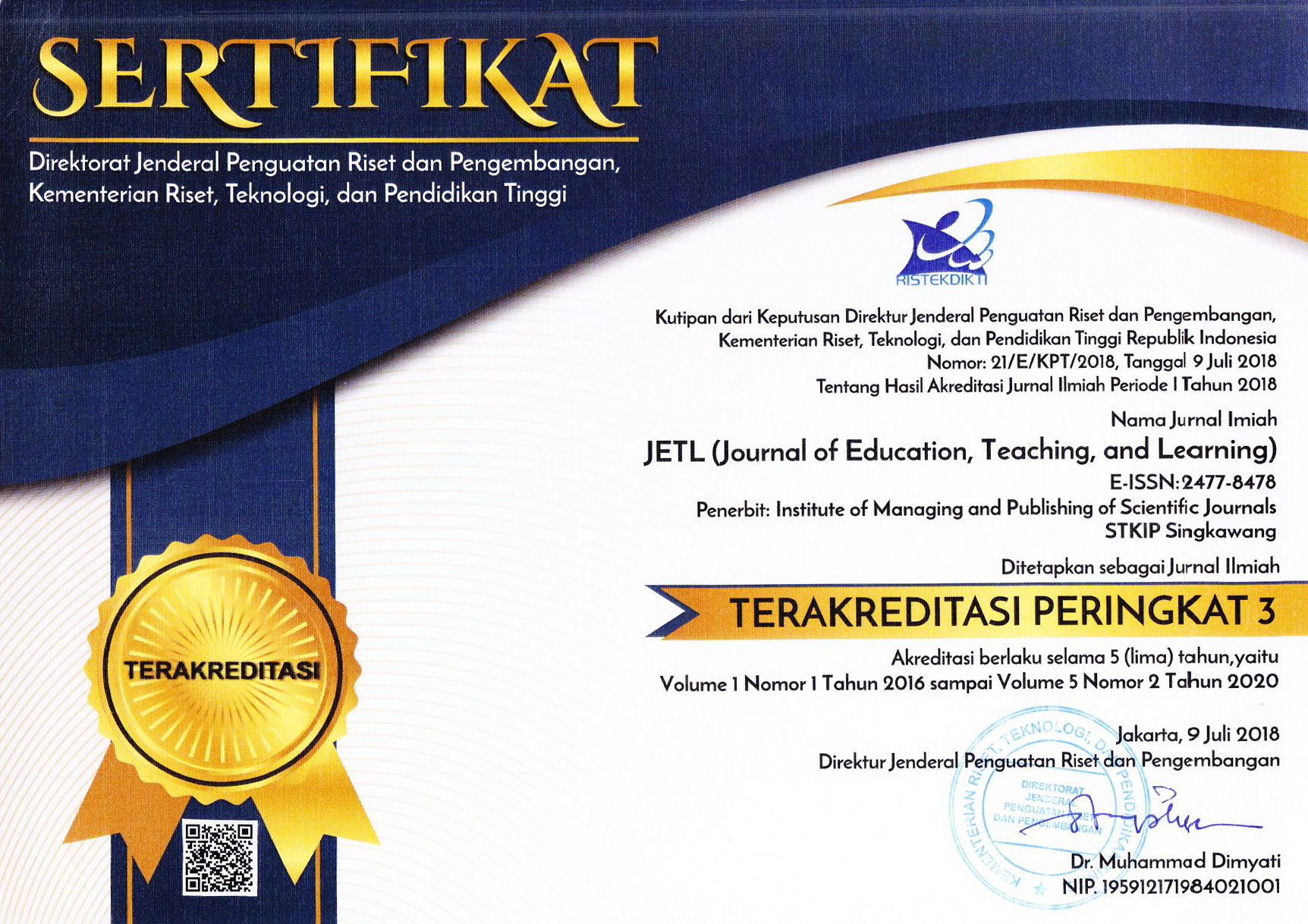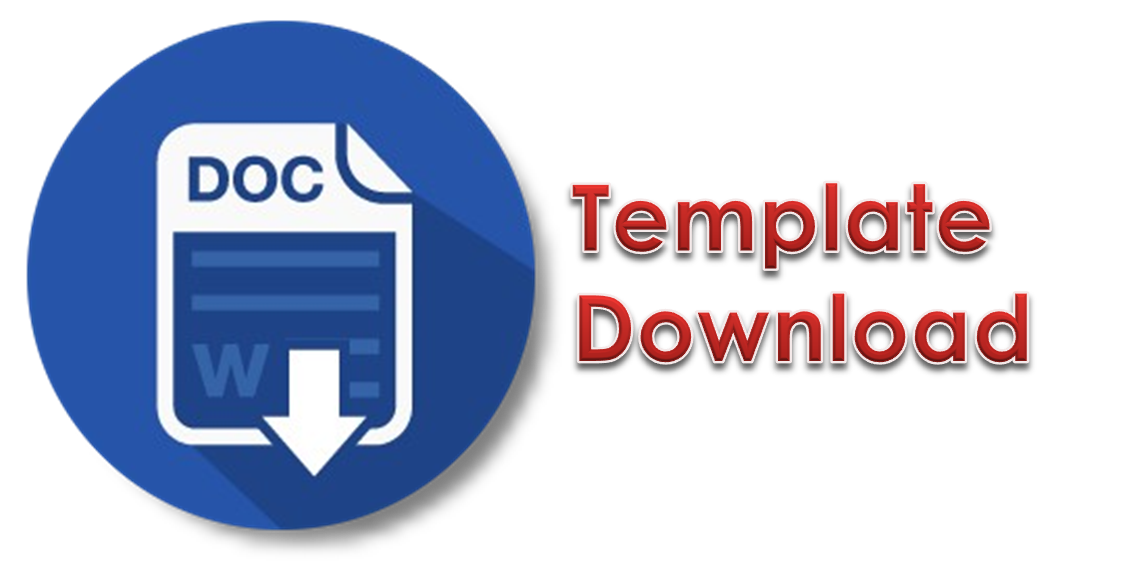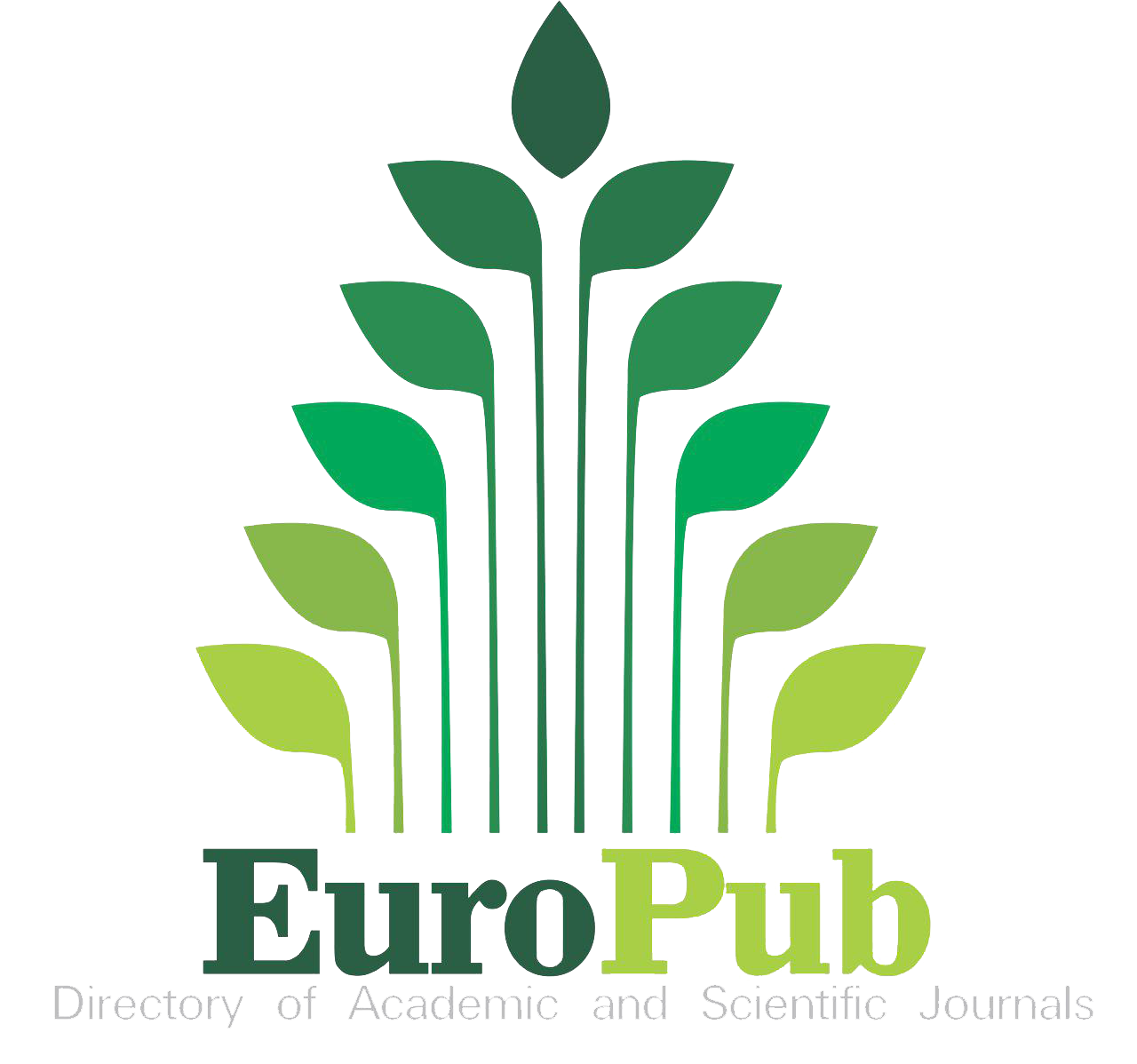Content Gradation OF Sundanese Textbooks for Junior High School and Senior High School (Review Of Facts, Concepts, Principles, and Procedures in The Field of Sundanese Language Study in 2013 Local Content Curriculum Revised 2017)
Abstract
Keywords
Full Text:
PDFReferences
Arifin, M. S. (2015). Retrieved from http://muhsyamsularifin. blogs.uny.ac.id/wpcontent/uploads/sites/1979/2015/12/PENGEMBANGAN-MATERI-PEMBELAJARAN.pdf.
Dalman. (2013). Keterampilan Membaca. Jakarta: Rajawali Pers.
Depdiknas. (2003). Kurikulum 2004 SMA: Pedoman Khusus Pengembangan Silabus dan Penilaian Mata Pelajaran Kimia. Jakarta: Ditjen Dikdasmen Direktorat Dikmenum, Depdiknas.
Dheini, N. (2008). Materi Pokok Metode Pengembangan Bahasa. Jakarta: Universitas Terbuka.
Dobao, A. F. (2012). Collaborative Writing Tasks in The L2 Classroom: Comparing Group, Pair, and Individual Work. Journal of Second Language Writing, 21(1), 40-58.
Eriyanti, & Wahyu, R. (2018). Power Gap as One of the Trigger of Verbal Abuses Committed by Teachers in Schools. International Journal of Instruction, 11(1), 363-378.
Fauziah, U. (2015). Desain Penelitian Pengembangan Bahan Ajar IPA Terpadu Tema Cahaya dan Warna untuk Pembelajaran IPA SMP. Simposium Nasional Inovasi dan Pembelajaran Sains 2015, (pp. 573-576).
Haerudin, D. (2020). Gradasi Materi Buku Teks SMP dan SMA (Kajian Fakta, Konsep, Prinsip, dan Prosedur pada Bidang Studi Bahasa Sunda Kurikulum Mulok 2013 Revisi 2017). Seminar Internasional Riksa Bahasa, (pp. 1175-1184).
Harsch, C., & Hartig, J. (2016). Comparing C-tests and Yes/No vocabulary size tests as predictors of receptive language skills. Language Testing, 33(4), 555-575. https://doi.org/10.1177/0265532215594642
Kholid, I. (2017). Motivasi Dalam Pembelajaran Bahasa Asing. English Education: Jurnal Tadris bahasa Inggris, 10(1), 61-71.
Li, Z., & Xu, Y. (2020). Unpacking the Processes of Materials Use: An Interdisciplinary Perspective of Language Teachers’ Use of Materials in China. SAGE Open. 1-13. https://doi.org/10.1177/2158244020977875
Mahmudah, R. (2016). Analisis kualitas buku teks pelajaran pendidikan agama Islam dan budi pekerti kelas VII Sekolah Menengah Pertama (SMP) Kurikulum 2013 di Kabupaten Malang. Undergraduate thesis, Universitas Islam Negeri Maulana Malik Ibrahim.
Ngalimun, S. P. (2014). Strategi dan Model Pembelajaran . Yogyakarta: Aswaja Pessindo.
Nulhakim, L., Wibawa, B., Erwin, T. N., Nuriah, T., & Syahrial, Z. (2018). The Role of Teacher in Science Learning through Multiple Intelligences in Sekolah Peradaban Cilegon. 4(2), 148-157.
Nurdeani, R. (2014). Analisis Buku Teks Pelajaran Bahasa Inggris Berdasarkan Standar Penulisan Buku Teks Pelajaran (Penelitian Deskriptif Terhadap Buku Teks Pelajaran Bahasa Inggris di Kelas III SD Negeri Layungsari Kecamatan Cihideung Kota Tasikmalaya). Jurnal Ilmiah Mahasiswa Pendidikan Guru Sekolah Dasar, 1(1), 1-9.
Patiung, D. (2016). Membaca Sebagai Sumber Pengembangan Intelektual. Al-Daulah Jurnal Hukum Pidana dan Ketatanegaraan, 5(2), 352-376.
Peraturan Menteri Pendidikan dan Kebudayaan Republik Indonesia No. 67 Tahun 2013 Kerangka Dasar dan Struktur Kurikulum Sekolah Dasar/Madrasah Ibtidaiyah.
Pophan, W. J., & Baker, E. L. (2005). Tehnik Mengajar Secara Sistematis (4th ed.). (A. Hadi, & ddk., Trans.) Jakarta : PT. Rineka Cipta.
Shaw, R. S. (2019). The Learning Performance of Different Knowledge Map Construction Methods and Learning Styles Moderation for Programming Language Learning. Journal of Educational Computing Research, 56(8), 1-23. 1407–1429. https://doi.org/10.1177/0735633117744345
Shoimin, A. (2014). 68 Model Pembelajaran Inovatif dalam Kurikulum 2013. Yogyakarta: Ar-ruzz Media.
Sugiyono. (2008). Metode Penelitian Kuantitatif, Kualitatif dan R&D. Bandung: Alfabeta.
Suistika, R. F., & Ishartiwi. (2019). Development of Picture Book Media for Expressive Language Skills of Children with Autism. Indonesian Journal of EFL and Linguistics, 4(1), 27-39.
Sudjana, N. (2013). Penilaian Hasil Proses Belajar Mengajar. Bandung: PT Remaja Rosdakarya.
Sulistyowati, A., & Sujadi, A. A. (2015). Analisis kesalahan dalam menyelesaikan soal sudut, luas, dan keliling segitiga siswa Kelas VII SMP Negeri 2 Mlati, Sleman. UNION: Jurnal Pendidikan Matematika, 3(3).
Suratni, & Paat, J. (2014). Penelaahan Buku Teks Pelajaran Kurikulum 2013 Ditinjau dari Aspek Kelayakan Isi, Penyajian, Bahasa, dan Kegrafikaan. Jurnal Publipreneur, 2(3), 15-30.
Tavakoli, P., & Foster, P. (2011). Task Design and Second Language Performance: The Effect of Narrative Type on Learner Output. Language Learning: A Journal of Research in Language Studies, 61(1), 37-72.
Woolley, G. (2010). Developing Reading Comprehension: Combining Visual and Verbal Cognitive Processes. Australian Journal of Language and Literacy, 33(2), 108-125.
Xu, Z. (2018). Exploring English as an International Language – Curriculum, Materials and Pedagogical Strategies. RELC Journal, 49(1), 102-118. https://doi.org/10.1177/0033688217753848
DOI: http://dx.doi.org/10.26737/jetl.v6i1.1535
Refbacks
- There are currently no refbacks.

This work is licensed under a Creative Commons Attribution-NonCommercial 4.0 International License.
Published by:
Institute of Managing and Publishing of Scientific Journals STKIP Singkawang
Sekolah Tinggi Keguruan dan Ilmu Pendidikan (STKIP) Singkawang
Address : STKIP Singkawang, Jalan STKIP - Kelurahan Naram Singkawang, Kalimantan Barat, INDONESIA, 79251
No. Telp. : +62562 420 0344
No. Fax. : +62562 420 0584
JETL (Journal of Education, Teaching, and Learning)
e-ISSN : 2477-8478
p-ISSN : 2477-5924

Editor in Chief Contact: [email protected] / Wa: +6282142072788
Publisher Contact: [email protected] / Wa: +6282142072788
Management Tools
JETL Indexed by:
JETL (Journal of Education, Teaching, and Learning) is licensed under a Creative Commons Attribution-NonCommercial 4.0 International License.











